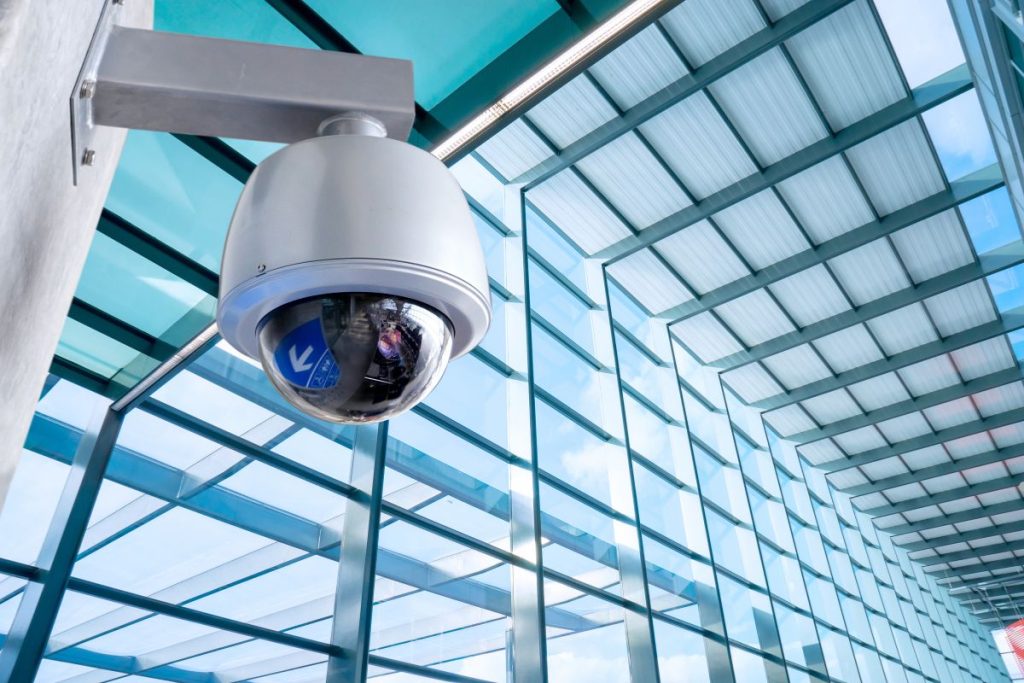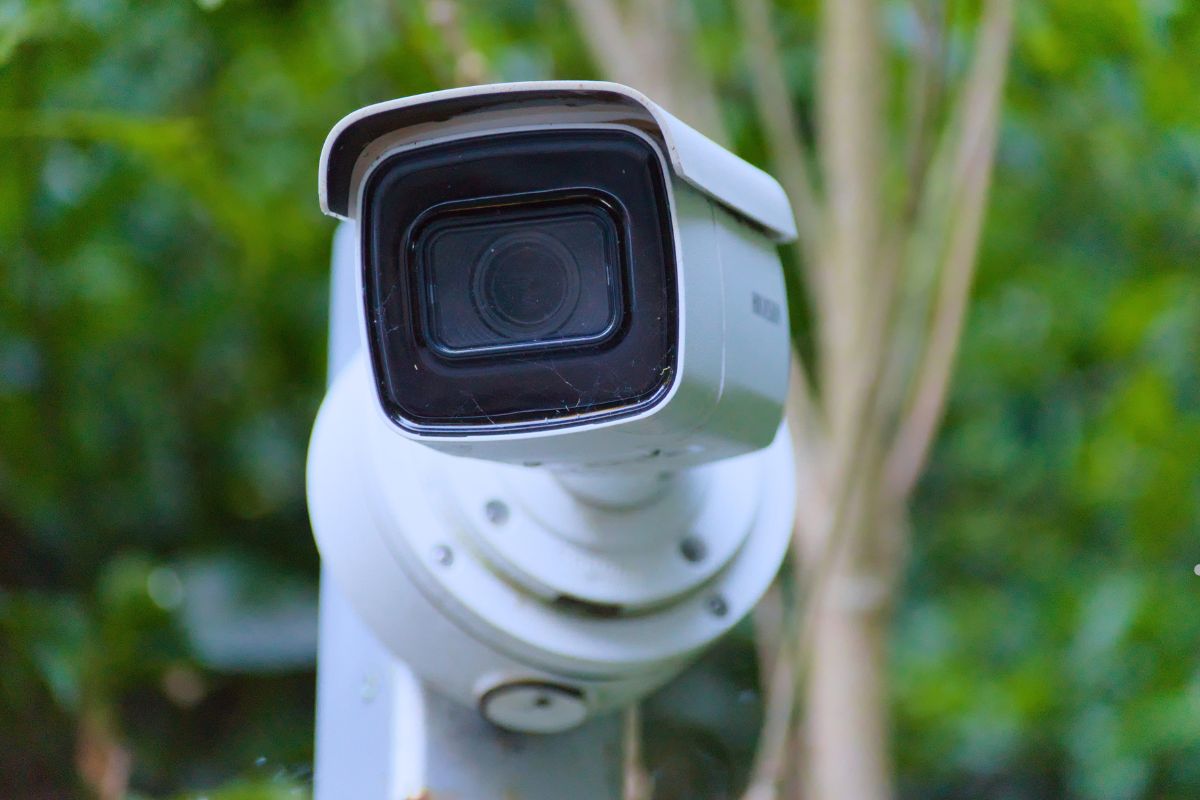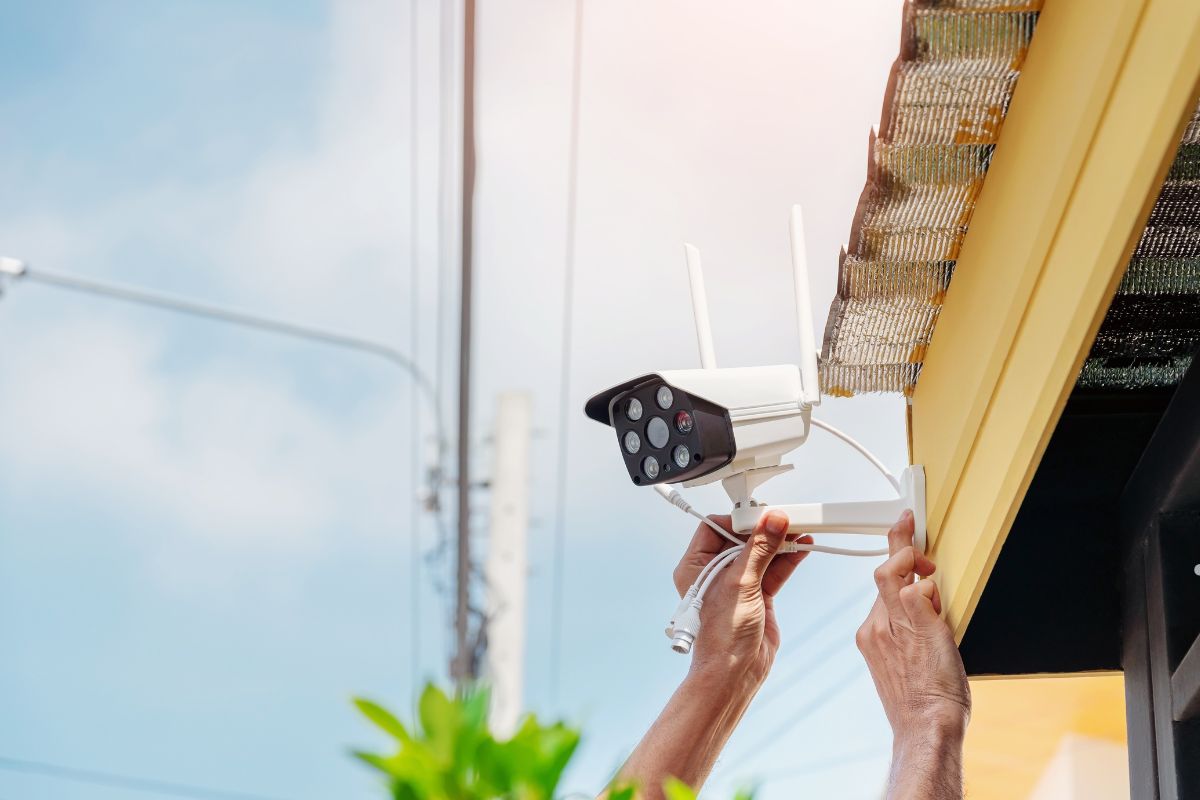
Choosing the right security camera for your San Francisco property can feel overwhelming. The best security camera is the one that perfectly matches your specific needs, property layout, and security goals. This comprehensive guide will walk you through everything you need to know, from understanding your priorities to navigating San Francisco-specific considerations, ensuring you choose a system that provides optimal protection and peace of mind.
Why San Francisco Needs Smart Security Cameras
San Francisco, with its vibrant neighborhoods and bustling city life, also faces its share of security challenges. Whether you’re a homeowner concerned about package theft or a business owner looking to deter vandalism, a strategically placed security camera can make a significant difference. Investing in security cameras provides not only a visual deterrent but also valuable evidence in case of an incident. It also gives you the peace of mind knowing your property is under constant watch, even when you’re away.
Defining Your Security Goals

Before diving into camera models and features, take a moment to define your security goals. What are you hoping to achieve with a security camera system? Are you primarily concerned about deterring potential burglars, monitoring activity around your property, recording evidence of incidents, or simply gaining peace of mind? Knowing your objectives will help you narrow down your options and choose the features that are most important to you. Consider what you’re trying to protect: Is it your family, your valuable possessions, your business assets, or something else? The more clearly you define your goals, the easier it will be to select the right camera.
Assessing Your Property & Surveillance Area
Take a walk around your San Francisco property and assess potential vulnerabilities. Consider the size of your property, the number of entry points (doors, windows, gates), and areas that are difficult to see from inside the house or business. Identify any blind spots where intruders could potentially hide. Think about indoor versus outdoor use, as cameras designed for each environment have different requirements. Consider the typical weather conditions in your area of San Francisco. Does your property get a lot of fog? Rain? You’ll need to choose cameras with adequate weatherproofing. This assessment will help you determine how many cameras you need, where to position them for optimal coverage, and what features are essential.
Wired vs. Wireless Security Cameras
One of the first and most important decisions you’ll need to make when setting up a security camera system is whether to choose wired or wireless cameras. Each option comes with its own set of advantages and drawbacks, and understanding these differences can help you make the right choice based on your specific needs and preferences. Let’s explore the pros and cons of both wired and wireless security cameras to help you determine which is the best fit for your property.
Pros and Cons of Wired Security Cameras
Wired cameras are generally more reliable because they don’t rely on a Wi-Fi connection. They offer a stable and secure connection, reducing the risk of interference or hacking. Wired systems often support Power over Ethernet (PoE), which means the camera receives both power and data through a single cable, simplifying installation. However, wired cameras can be more challenging to install, requiring drilling and running cables through walls.
Pros and Cons of Wireless Security Cameras
Wireless cameras are easier to install, as they don’t require running cables. They offer more flexibility in terms of placement, allowing you to easily move them around as needed. However, wireless cameras rely on a stable Wi-Fi connection, which can be susceptible to interference. They also require batteries or power adapters, adding to the maintenance burden. For more in-depth comparison check out this article on Wired vs Wireless security cameras.
Key Camera Features to Consider
Once you’ve decided between wired and wireless, it’s time to consider the key features that will impact your camera’s performance:
Resolution (720p, 1080p, 4K)
Resolution refers to the image quality of the camera. Higher resolution cameras (1080p or 4K) provide sharper, more detailed images, making it easier to identify faces and objects.
Field of View (FOV)
The field of view (FOV) determines how wide of an area the camera can capture. A wider FOV allows you to cover more ground with a single camera, reducing the number of cameras you need.
Night Vision (Infrared, Starlight)
Night vision is essential for capturing clear footage in low-light conditions. Infrared (IR) night vision is the most common type, using infrared LEDs to illuminate the area. Starlight night vision uses advanced sensors to capture color images in extremely low light.
Motion Detection (PIR, AI-Powered)
Motion detection allows the camera to automatically record when movement is detected. PIR (passive infrared) motion detection is a common type, while AI-powered motion detection can distinguish between humans, animals, and vehicles, reducing false alarms.
Two-Way Audio
Two-way audio allows you to communicate with visitors or deter intruders remotely.
Weatherproofing (IP Rating)
Weatherproofing is crucial for outdoor cameras. The IP (Ingress Protection) rating indicates how well the camera can withstand dust and water.
Consider the San Francisco climate.Fog and rain are frequent in many areas, making it crucial to choose a camera with a high IP rating (IP66 or higher) for reliable performance. For more details, check out our guide on the best outdoor security camera features to consider.For expert advice or installation services, call us today!
Pan, Tilt, Zoom (PTZ) Cameras
Pan, Tilt, Zoom (PTZ) cameras offer the flexibility to remotely control the camera’s direction and zoom level. This allows you to monitor a wider area and zoom in on specific details as needed. PTZ cameras are ideal for larger properties or areas where you need to be able to actively monitor activity.
Local Storage vs. Cloud Storage
How your camera stores recordings is another important consideration:
Pros and Cons of Local Storage
Local storage involves storing recordings on an SD card or a Network Video Recorder (NVR). Local storage is generally more affordable than cloud storage, but it can be vulnerable to theft or damage.
Pros and Cons of Cloud Storage
Cloud storage involves storing recordings on a remote server. Cloud storage is more secure, as the recordings are protected even if the camera is stolen or damaged. However, cloud storage typically involves a monthly subscription fee.
Professional Monitoring vs. Self-Monitoring
Consider whether you want to monitor your security cameras yourself or hire a professional monitoring service:
Professional monitoring services provide 24/7 monitoring of your cameras and can dispatch emergency services if necessary. Self-monitoring allows you to monitor your cameras via a smartphone app, but it requires you to be vigilant and respond to alerts yourself.
DIY Installation vs. Professional Installation
The final decision is whether to install the cameras yourself or hire a professional installer.
Considerations for DIY Installation
DIY installation can save you money, but it requires technical skills and time.
Benefits of Professional Installation
Professional installation ensures that the cameras are installed correctly and positioned for optimal coverage. A professional installer can also help you configure the cameras and connect them to your network. Ensure your installer is licensed and insured. Verify credentials using this resource provided by the state.
Choosing a Security Camera Brand & Vendor
With so many brands on the market, doing your research is important:
When choosing a security camera brand, consider factors like product quality, customer support, and warranty. Read online reviews and compare features and prices. Look for brands that have a good reputation for reliability and customer satisfaction.
Finding Local San Francisco Security Camera Installers

Finding a reputable security camera installer is essential for ensuring a proper installation and reliable performance. Ask for referrals from friends or neighbors. Check online reviews and ratings. Make sure the installer is licensed and insured. Get multiple quotes before making a decision.
Budget & Cost Considerations
Understand the total cost of ownership. This includes the price of the cameras, installation fees, storage costs, and monthly monitoring fees (if applicable). Set a budget and stick to it. Look for sales and discounts.
San Francisco Specific Considerations
San Francisco presents unique challenges and opportunities for security:
Addressing Neighborhood-Specific Concerns
Consider the specific security concerns in your neighborhood. Some neighborhoods may be more prone to certain types of crime. Choose cameras that are appropriate for your specific needs.
Regulations and Privacy in San Francisco
Before installing security cameras, be sure to check any local regulations or ordinances related to their use. It’s important to respect your neighbors’ privacy by positioning your cameras in a way that doesn’t intrude on their space. In some areas, you may also need to display signs informing others that security cameras are in use on your property. Make sure you’re familiar with California’s privacy laws before setting up your system. Here’s a helpful guide to understanding privacy laws. For expert guidance or installation services, call us today!
Frequently Asked Questions About Security Cameras
What resolution is best for my needs?
1080p is generally sufficient for most home and business security needs. 4K provides even more detail, but it requires more storage space.
Can I legally record audio with my security camera in San Francisco?
California is a two-party consent state, meaning you generally need the consent of all parties being recorded to record audio.
How can I prevent my security camera from being hacked?
Use a strong password. Keep your camera’s firmware up to date. Enable two-factor authentication. Consider using a VPN.
Do I need a permit to install a security camera in San Francisco?
Check with your local building department to determine if a permit is required.
What’s the difference between wired and wireless security cameras?
Wired cameras are more reliable but harder to install. Wireless cameras are easier to install but rely on a Wi-Fi connection.
Securing Your San Francisco Property with the Right Camera
Choosing the right security camera system is a crucial step in protecting your San Francisco home or business. By understanding your needs, assessing your property, considering the key features, and being aware of local regulations, you can make an informed decision and invest in a system that provides optimal security and peace of mind. Take action today to secure your property.
Key takeaways for choosing security cameras
- Identify your security needs: Determine what you want to achieve with a security camera system.
- Assess your property: Evaluate potential vulnerabilities and blind spots.
- Consider camera features: Choose cameras with the features that are most important to you, such as high resolution, night vision, and motion detection.
- Choose the right type of camera: Select wired or wireless cameras based on your installation preferences and network setup.
- Be aware of local regulations: Understand any local laws or ordinances related to security camera usage.
- Budget wisely: When planning your security camera system, it’s important to consider the total cost of ownership. This includes not only the prices of the cameras themselves but also installation fees, ongoing storage costs, and any additional maintenance expenses. By evaluating all these factors, you can better budget and ensure you’re making an investment that suits your needs. For expert guidance and assistance with selecting and installing your security system, contact us today!
